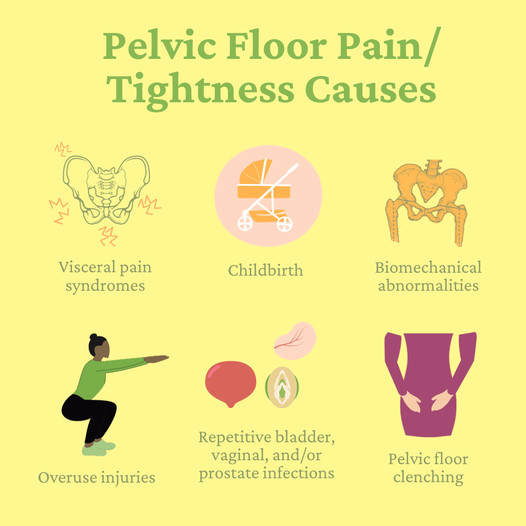Physical Therapy Info Health Tips
Our Integrated Physical Therapy blog, your go-to source for physical therapy articles and holistic health information. We provide expert insights, practical physical therapy tips, and the latest developments in the field. Whether you're recovering from an injury, managing chronic pain, or looking to improve your overall well-being, our physical therapy blog covers a variety of helpful topics.
Our goal is to empower you with the information you need to take an active role in your health and recovery. Ready to schedule an appointment and take control of your health? Contact Integrated Physical Therapy at 305-967-8976.
Understanding and Treating Urinary Incontinence: Common, Yet Not Normal
 Urinary incontinence is a common but often misunderstood condition that affects millions of people worldwide. While it is a prevalent issue, it is not a normal part of aging or childbirth and can significantly impact one's quality of life. In this article, we delve into the intricacies of urinary incontinence, its causes, and how a certified pelvic floor physical therapist can provide effective treatment to restore normalcy and enhance overall well-being.
Urinary incontinence is a common but often misunderstood condition that affects millions of people worldwide. While it is a prevalent issue, it is not a normal part of aging or childbirth and can significantly impact one's quality of life. In this article, we delve into the intricacies of urinary incontinence, its causes, and how a certified pelvic floor physical therapist can provide effective treatment to restore normalcy and enhance overall well-being.
What is Urinary Incontinence?
Urinary incontinence is the loss of bladder control, leading to the involuntary leakage of urine. This condition can range from occasional leaks when coughing or sneezing to a sudden, uncontrollable urge to urinate that doesn't allow time to reach a restroom.
Types of Urinary Incontinence
- Stress Incontinence: This occurs when physical activities such as coughing, sneezing, laughing, or exercising put pressure on the bladder, causing urine leakage.
- Urge Incontinence: Also known as overactive bladder, this type involves a sudden, intense urge to urinate followed by involuntary leakage.
- Overflow Incontinence: This happens when the bladder doesn't empty completely, leading to frequent or constant dribbling of urine.
- Functional Incontinence: In this type, physical or mental impairments prevent reaching the bathroom in time.
- Mixed Incontinence: A combination of stress and urge incontinence.
Several factors contribute to urinary incontinence, including:
- Childbirth: Vaginal delivery can weaken pelvic floor muscles and damage nerves, leading to incontinence.
- Aging: Muscle tone and strength decline with age, affecting bladder control.
- Menopause: Reduced estrogen levels can cause thinning of the lining of the urethra and bladder.
- Prostate Issues: In men, prostate enlargement or surgery can cause incontinence.
- Neurological Disorders: Conditions like Parkinson's disease, multiple sclerosis, and stroke can interfere with nerve signals involved in bladder control.
- Obesity: Excess weight can put additional pressure on the bladder.
 The Role of a Certified Pelvic Floor Physical Therapist
The Role of a Certified Pelvic Floor Physical Therapist
Who is a Pelvic Floor Physical Therapist?
A certified pelvic floor physical therapist is a specialized healthcare professional trained to evaluate and treat pelvic floor dysfunctions. These therapists possess in-depth knowledge of the muscles, ligaments, and nerves that support the bladder and other pelvic organs.
How They Help
- Comprehensive Evaluation: The first step in addressing urinary incontinence is a thorough evaluation. A pelvic floor physical therapist will assess the strength, coordination, and endurance of the pelvic floor muscles, along with the function of surrounding muscles and tissues.
- Personalized Treatment Plan: Based on the evaluation, a customized treatment plan is developed. This plan may include:
- Pelvic Floor Exercises: Also known as Kegel exercises, these help strengthen the pelvic floor muscles.
- Biofeedback: This technique uses sensors to monitor muscle activity, helping patients learn how to control their pelvic floor muscles.
- Bladder Training: This involves scheduled voiding and techniques to increase the intervals between urination.
- Lifestyle Modifications: Advice on diet, fluid intake, and weight management to reduce symptoms.
- Manual Therapy: Hands-on techniques to improve pelvic floor muscle function and relieve pain.
- Electrical Stimulation: This method uses mild electrical pulses to strengthen the pelvic floor muscles.
Benefits of Pelvic Floor Physical Therapy
Restored Bladder Control
Pelvic floor physical therapy can significantly improve bladder control by strengthening the muscles that support the bladder and urethra. This leads to fewer leaks and better management of urge incontinence.
Enhanced Quality of Life
By addressing urinary incontinence, patients often experience a notable improvement in their overall quality of life. They can engage in activities without fear of leaks and enjoy better social interactions.
Non-Surgical Solution
Pelvic floor physical therapy offers a non-invasive alternative to surgery. It avoids the risks associated with surgical procedures and provides a safe, effective way to manage and cure urinary incontinence.
Holistic Approach
Certified pelvic floor physical therapists take a holistic approach to treatment, considering all aspects of a patient's health. This comprehensive care ensures that all contributing factors to urinary incontinence are addressed.
Urinary incontinence, though common, is not a normal part of life and can be effectively treated. A certified pelvic floor physical therapist plays a crucial role in diagnosing and treating this condition through a personalized, non-surgical approach. By strengthening the pelvic floor muscles and adopting lifestyle changes, patients can regain control and improve their quality of life.


